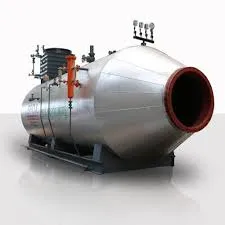Affordable Reciprocating Grate Steam Boiler Solutions for Efficient Energy Production and Cost Savings
Affordable Reciprocating Grate Steam Boiler An Overview
In the quest for efficient energy production, steam boilers have emerged as a fundamental component in various industries. Among the various types of boilers available, the reciprocating grate steam boiler stands out for its efficiency and cost-effectiveness. This article delves into the characteristics, advantages, and potential applications of cheap reciprocating grate steam boilers, offering a holistic view for industries aiming to optimize their operations while managing costs.
Understanding Reciprocating Grate Technology
A reciprocating grate steam boiler employs a unique mechanism that utilizes a moving grate to transport and combust solid fuels. This system is characterized by its ability to handle a wide variety of biomass and coal fuels, making it adaptable to numerous operational needs. The reciprocating motion of the grate allows for even distribution of fuel, while enhancing combustion efficiency by facilitating optimal air flow. As the fuel burns, the ash and unburned particles are effectively removed, ensuring a cleaner operation and reduced maintenance activities.
Key Advantages of Reciprocating Grate Steam Boilers
1. Cost Efficiency One of the primary reasons industries are gravitating towards cheap reciprocating grate steam boilers is their cost-effectiveness. These boilers are designed to utilize lower-grade fuels, such as agricultural residues and wood waste, thereby reducing fuel costs significantly. The initial investment in such boilers is often lower than that of more complex systems, making them an attractive option for many businesses.
2. Versatility Reciprocating grate steam boilers are not limited to a single type of fuel. Their design allows for the efficient burning of a variety of solid fuels, including wood chips, rice husks, and other biomass materials. This versatility is particularly beneficial for industries located in areas where access to conventional fuels may be limited or cost-prohibitive.
cheap reciprocating grate steam boiler

3. Environmental Benefits With increasing pressure to reduce carbon footprints, the ability of reciprocating grate steam boilers to use biomass fuels presents a sustainable alternative to traditional fossil fuels. Burning biomass not only lowers greenhouse gas emissions but also promotes waste recycling, contributing to a circular economy.
4. Robust Design These boilers are engineered for durability and reliability. The moving grate mechanism is designed to withstand high temperatures and abrasive materials, which translates to longer operational life and reduced downtime.
Applications in Various Industries
Reciprocating grate steam boilers find applications across multiple sectors. The agricultural sector benefits significantly from these systems, as they can process leftover organic materials as fuel, turning waste into energy. The food processing industry also utilizes these boilers for steam generation, leveraging their capability to handle diverse biomass. Moreover, pulp and paper mills use reciprocating grate boilers to produce steam for various manufacturing processes.
Conclusion
In summary, the cheap reciprocating grate steam boiler presents a viable energy solution for industries seeking to balance efficiency with budget constraints. With their ability to utilize a diverse range of solid fuels, combined with their cost-effective operation, these boilers are well-positioned to meet the growing energy demands of today’s world. As industries continue to prioritize sustainability and economic viability, reciprocating grate steam boilers will undoubtedly play a key role in shaping the future of energy production. By investing in such innovative technology, businesses not only enhance their operational capabilities but also contribute positively to the environment and society.
-
Advanced Electric Steam Boiler Manufacturers | GPT-4 Turbo AINewsAug.01,2025
-
Custom Steam Boilers Manufacturer | AI-Enhanced EfficiencyNewsJul.31,2025
-
Top Electric Steam Boiler Makers | AI-OptimizedNewsJul.31,2025
-
Top Electric Steam Boiler Manufacturers - High Efficiency SolutionsNewsJul.30,2025
-
Top Electric Steam Boiler Manufacturers – Efficient Industrial SolutionsNewsJul.29,2025
-
Top Electric Steam Boiler Manufacturers | Reliable Industrial SolutionsNewsJul.29,2025

